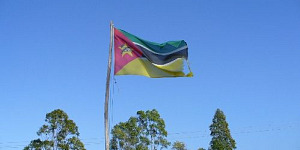Mozambique's central bank tightened its monetary policy stance further in an effort to change the current trend of rising inflation and a falling exchange rate from the suspension of foreign aid, lower availability of foreign exchange due to lower exports, the impact of floods and droughts on food supply, military tensions in some regions and the downgrade of the country's credit rating.
The Bank of Mozambique raised its benchmark standing lending facility rate by another 300 basis points to 17.25 percent and the deposit facility rate by the same amount to 10.25 percent.
The reserve requirement for metical liabilities was raised by 250 basis points to 13.0 percent with effect from Aug. 22.
The Bank of Mozambique, which has now raised its rate by 750 basis points this year, added that it would intervene in interbank markets to ensure the monetary base reaches the target of 82.051 billion meticais in July, up from 77.1 billion in June that was 1.6 billion above the bank's target for that month and 36.0 percent higher than a year ago.
The meeting by the central bank's monetary policy committee was postponed from July 18 until today for unspecified "technical reasons" according to local press reports.
Mozambique's inflation rate accelerated further to a 2016-high of 19.72 percent in June from 18.27 percent in May as the exchange rate of the metical has continued to fall.
The metical was already weakening from the fall in global commodity prices from late 2014 but was hit hard by the suspension of foreign aid following the discovery
The metical was trading at 66.5 to the U.S. dollar today, down 28 percent since the start of the year, and 50 percent since the start of 2015, with the central bank governor, Ernesto Gove, last month saying the decline in international reserves was undermining its ability to stability the foreign exchange market.
Mozambique's trade deficit narrowed by 34 percent to US$871 million in the first quarter of the year, reflecting a 22.7 percent fall in imports due to the depreciation of the metical and slower domestic demand, particularly from large investment projects. Exports, however, also continued to fall - down by 19.3 percent, due to lower commodity prices and reduced revenue from tourism and transport services, the central bank said.
Net International Reserves (NIR) in June rose by US$ 221 million to $1.920 billion due to deposits of $207 million held by credit institutions at the central bank to establish mandatory foreign currency reserves.






































